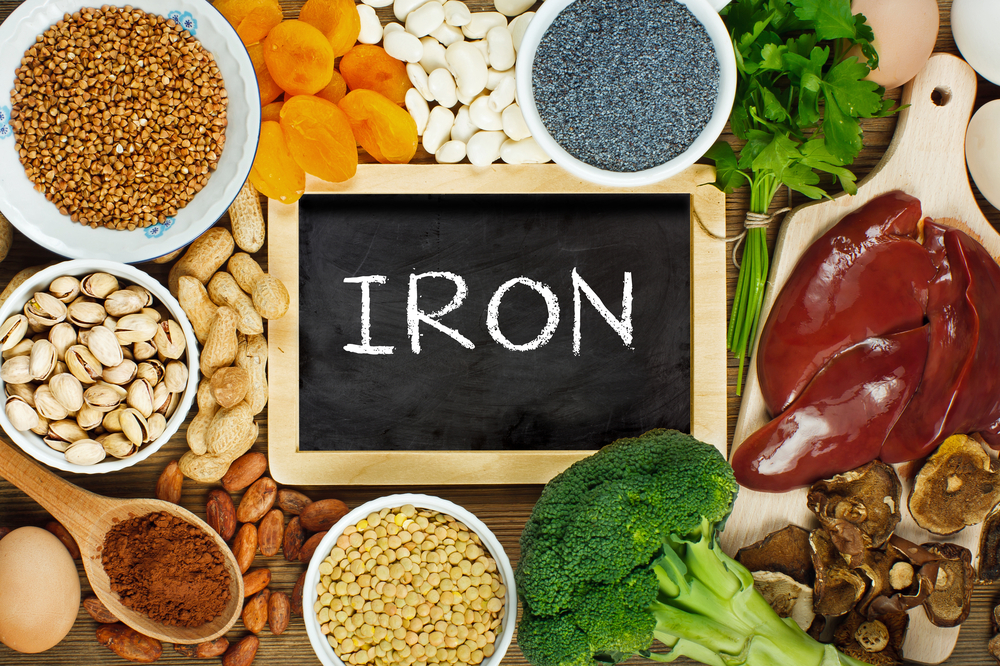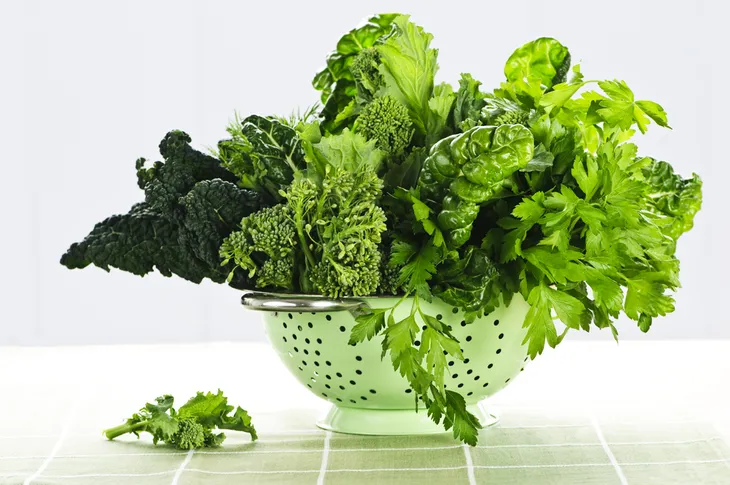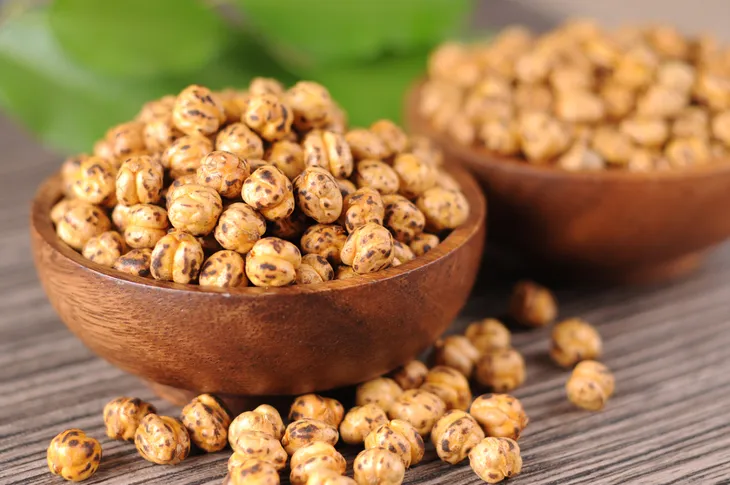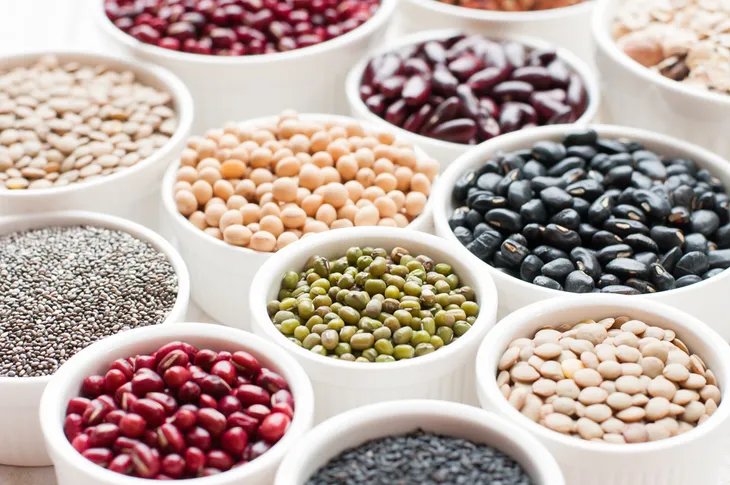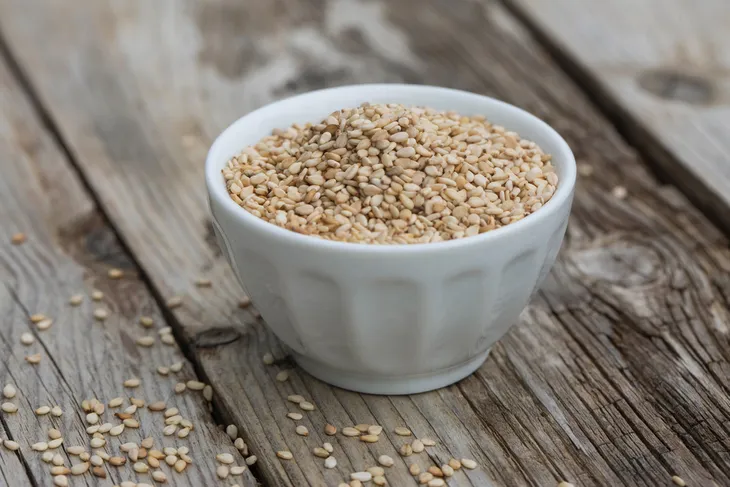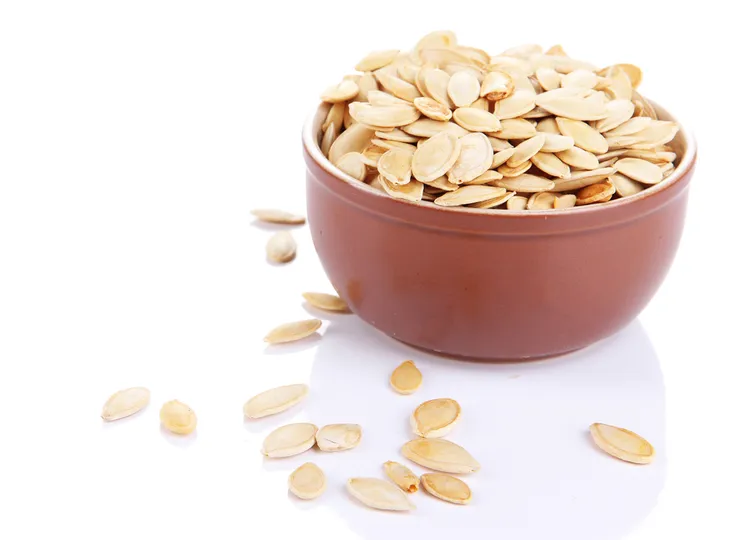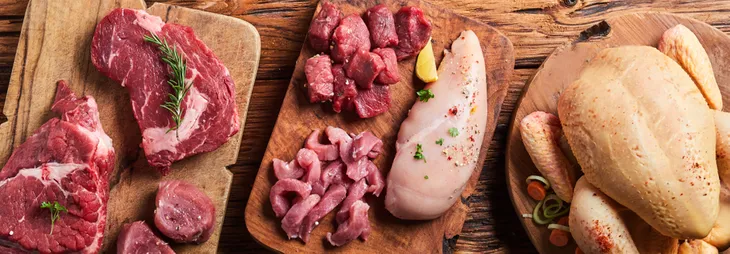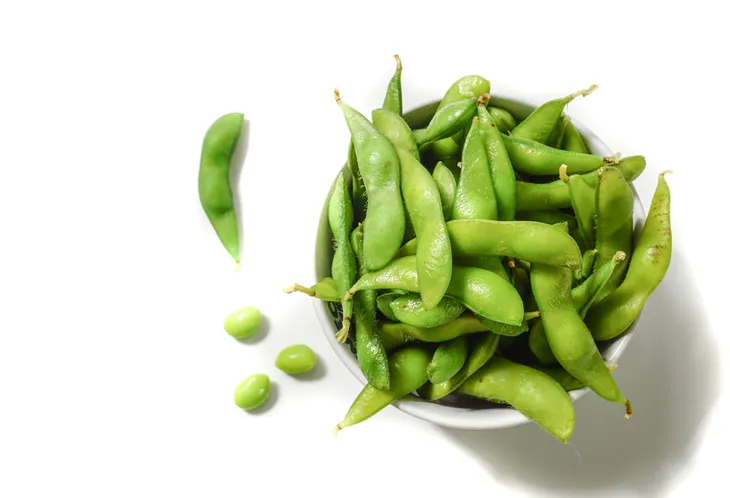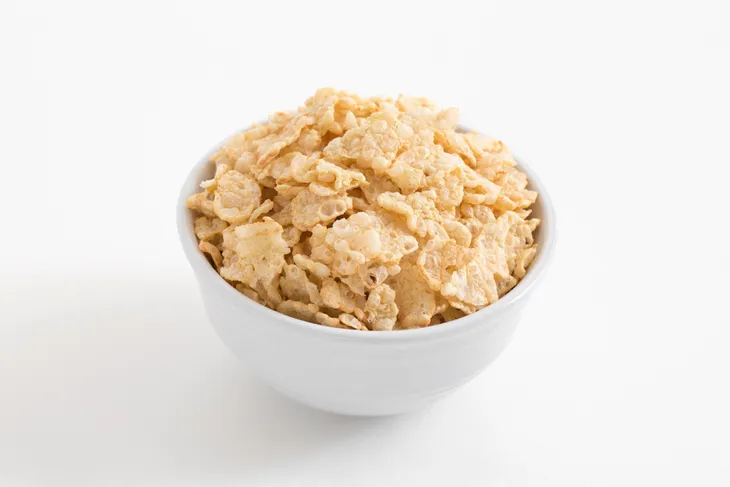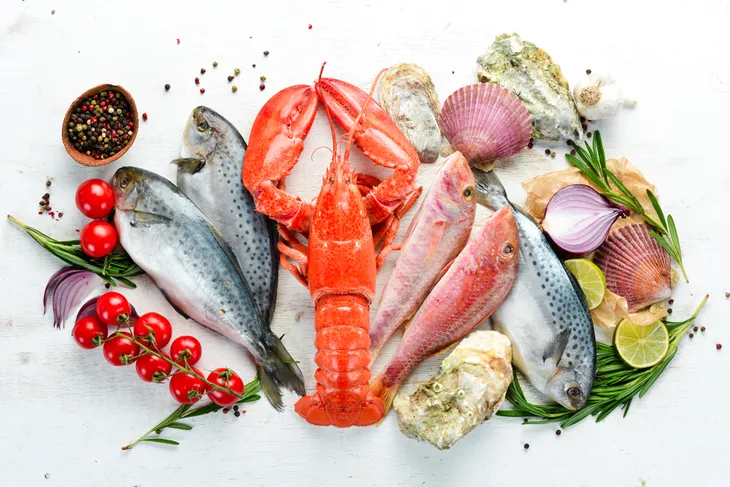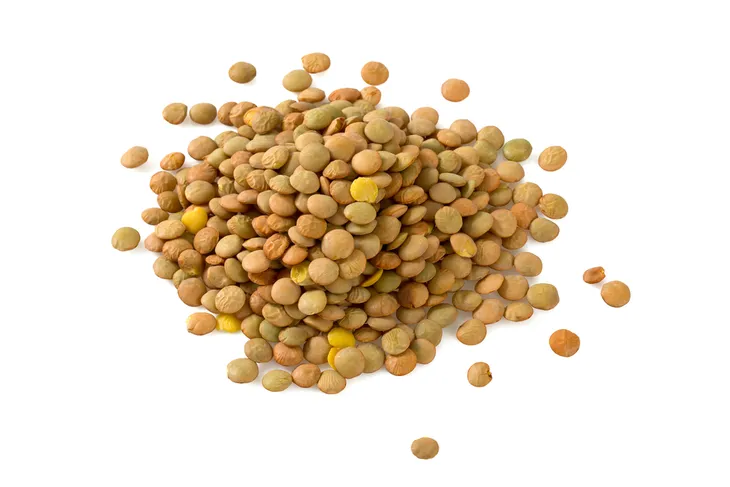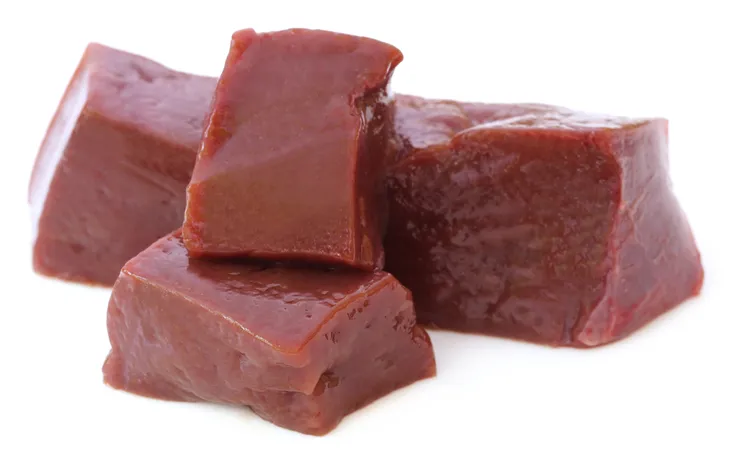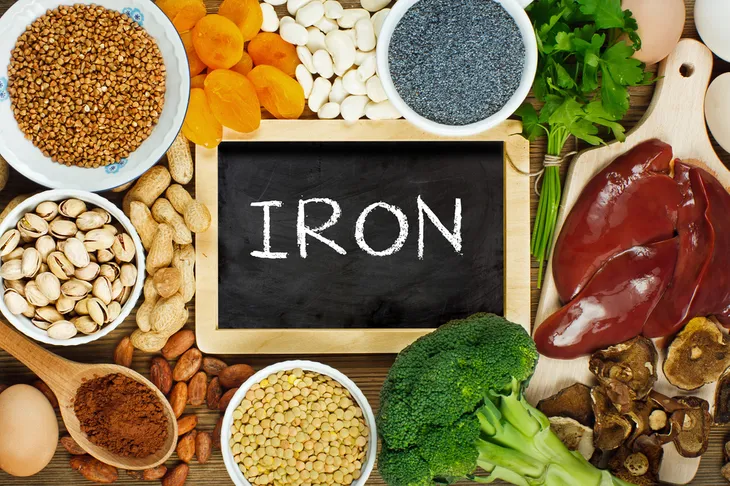There are different types of anemia, but iron deficiency anemia is the most common. It occurs when a person’s blood doesn’t have enough healthy red blood cells. This is problematic because red blood cells are responsible for carrying oxygen to the body’s tissues, explains the Mayo Clinic. In the case of iron deficiency anemia, the anemia condition is caused by a lack of iron.
Iron deficiency anemia can leave a person feeling tired and short of breath, writes the source. Luckily, there are ways to help increase iron intake. One of the ways to do this is by eating a diet full of iron-rich foods.
Here’s a look at the top iron-rich foods to eat for anemia…
Leafy Greens
When it comes to leafy greens, the darker the better! Dark leafy greens are the best sources of nonheme iron, says Healthline. These include spinach, kale, collard greens, dandelion greens, and Swiss chard.
However, while spinach and kale are high in iron, they’re also high in oxalates. “Oxalates can bind with iron, preventing the absorption of nonheme iron,” warns Healthline. You also shouldn’t use eating greens as the sole way to treat this condition.
Chickpeas
Who doesn’t love chickpeas? They are popular among plant-based eaters because they are so versatile. They can be mashed into hummus, mixed together to make the base of a plant-based burger, baked into bread, or even roasted as a tasty, crunchy snack!
To top it off, they’re high in iron. According to the USDA, this legume provides 3.7-mg of iron per cup and 14.6-grams per cup of protein.
Everyday Health suggests adding chickpeas to salads, pasta dishes, or even pureed into hummus. To give an added boost of vitamin C, the source suggests adding a little lemon juice which helps the body absorb non-heme iron in the legumes.
Beans
Similar to chickpeas, beans are another great source of iron. People who are vegetarians often turn to beans in order to supplement the iron they miss out on with a plant-based diet. Another great bonus? They’re super affordable and versatile.
Healthline lists kidney beans, soybeans, black-eyed peas, pinto beans, black beans, peas, and lima beans as the best iron-rich options when it comes to beans.
Sesame Seeds
These seeds are small but mighty! Sesame seeds are a surprisingly good source of iron with 1.31-mg of iron per tablespoon, says the USDA. “Sesame seeds have a wonderful nutty taste and are a rich source of iron,” says Frances Largeman-Roth, RD to Everyday Health. They also contain other essential nutrients like copper, phosphorus, vitamin E, and zinc.
You can easily add sesame seeds to any meal, particularly when baking, in a smoothie, or by sprinkling them on a salad. Everyday Health points out that a tablespoon of sesame seeds offers a milligram of iron which is huge considering the daily recommended amount is 18-mg!
Pumpkin Seeds
Another seed that offers up lots of iron for those with anemia are pumpkin seeds. Often overlooked and underrated, these crunchy seeds typically only surface in people’s kitchens around Halloween, but they are available all year round. As per the USDA, 1-cup of raw pumpkin seeds without the shell contains 2.7-mg of iron making it a great source of iron.
What’s even better about pumpkin seeds is they’re easy to add to a variety of dishes. They make a great topper for salads, cereal, yogurt, or even just as a tasty snack on their own!
Meat and Poultry
Many people get a good source of iron from meat consumption. All meat and poultry contain heme iron, says Healthline. This is why vegetarians have to be vigilant about getting their daily iron intake from other plant-based sources like leafy greens, beans, and lentils.
The best sources of iron from meat are red meat, lamb, and venison. Poultry and chicken do contain iron, but in lower amounts, notes the source.
Edamame
Commonly served with sushi, edamame is a great snack that backs a mean protein and iron punch! According to the USDA, a cup of these raw soybeans contains 9-mg of iron. In addition to this nutrient, the National Institutes of Health (NIH) notes they are a good source of minerals like copper which work to keep our blood vessels and immune system working well. They also contain manganese and fiber which is what makes them such a great plant-based protein.
You can add edamame to stir-fries or steam them and eat them with a little bit of sea salt. You can also add them to salads or pasta dishes.
Fortified Foods
There are many different fortified foods, most of which are fortified with iron. These are a great option for vegetarians who are looking to boost their iron intake without eating meat.
Healthline provides some examples of fortified foods, such as fortified orange juice, fortified ready-to-eat cereals, foods made from fortified refined flour, fortified pasta, fortified cornmeal, and fortified white rice. Not all fortified foods are healthy, so be sure to read the label.
Seafood
People either love seafood or hate it, but for those who love it — keep eating it! Some seafood such as oysters, clams, scallops, crabs, and shrimp are high in heme iron. According to Healthline, most fish also contain iron.
The source provides a list of fish sources that are known to be high in iron which include: canned or fresh tuna, mackerel, Mahi Mahi, pompano, fresh perch, and fresh or canned salmon.
Be wary of canned sardines because while they are high in iron, they’re also high in calcium. Calcium can affect iron absorption in the body so it’s best not to combine calcium-rich foods with meals containing iron-rich foods.
Lentils
Similar to beans, lentils are another legume that is high in iron. In fact, the USDA notes that 1-cup of cooked lentils provides about 6.59-mg of iron per cup. This is in addition to the 15.6-grams of fiber per cup.
Eating more fiber is just as important as iron as it can help lower cholesterol and stabilize blood sugar, says Harvard T.H. Chan School of Public Health.
You’ll have no problem incorporating lentils into your daily diet as they are extremely affordable and versatile. Everyday Health suggests adding them to soups, chili, salads, and even burgers!
Liver
Liver isn’t a popular food choice for many people, but it should be! At least for those who are looking to boost their iron intake, particularly for iron deficiency anemia. Organ meats are a great source of iron, says Healthline.
When it comes to organ meats, liver is likely the most common. Plus, the source notes that it’s rich in iron and folate. Other iron-rich organ meats are heart, kidney, and beef tongue.
How to Get More Iron From Food
Now that we know what foods to eat in order to boost our iron levels, how do we make sure that our body is working with us and not against us? According to WebMD, some foods can actually hinder iron absorption, while others help.
For example, coffee and tea or calcium-rich foods or drinks can work against iron absorption so avoid drinking and eating these foods while eating meals with iron-rich foods. To improve iron absorption, the Mayo Clinic suggests eating iron-rich foods alongside foods that are rich in vitamin C, such as orange juice, grapefruit, kiwi, peppers, oranges, broccoli, strawberries, tangerines, tomatoes, melons, and leafy greens. You can also “eat nonheme iron foods with food from the meat, fish, and poultry group,” writes the source.
The last option is to take an iron supplement, but speak to a health care provider first in order to get the proper dosage. Follow their instructions carefully. “Because very little iron is excreted from the body, iron can accumulate in body tissues and organs when the normal storage sites — the liver, spleen, and bone marrow — are full,” explains WebMD. Iron toxicity is rare particularly with food, but more common when taking iron supplements.
